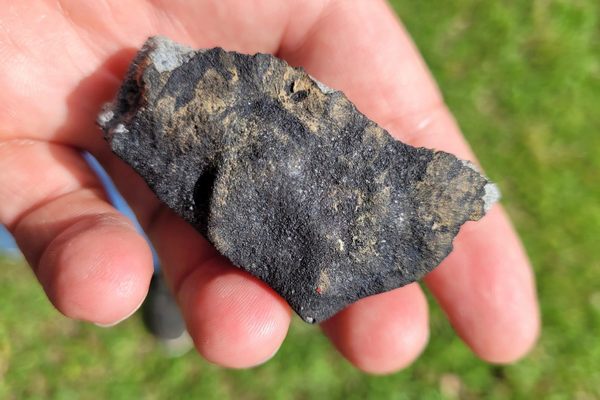The Mysterious Case of the Vanishing Comet
The key to solving the puzzle was meteor showers.

The first Japanese Antarctic Research Expedition was making its way across the Indian Ocean in early December 1956 when the scientists on board noticed a meteor shower—about 300 meteors every hour—coming from an unusual part of the sky. The bright bits of rock burning up in the atmosphere seemed to be centered around the Phoenix constellation. But the shower also seemed to be a one-off, and the so-called Phoenicid meteor shower wasn’t seen again—until 2014. The origin of the meteors has been a mystery, but astronomers from the National Astronomical Observatory in Japan now say they’re remnants of a comet last spotted in 1820.
The comet, 289P/Blanpain, was first seen by Jean Jacques Blanpain in November 1819, when he observed that the tailless comet had a “very small and confused nucleus.” Other observers in Europe saw the comet in the morning sky until January 1820, when it disappeared from view. It was calculated to return around five years later, but the hunk of rock, ice, and dust never reappeared.
The fate of 289P/Blanpain became a little clearer in 2005 when scientists determined an asteroid discovered in 2003, WY25, follows the long-lost comet’s orbit. It was, they figured, all that was left after the ice, dust, and gas that made it a comet had dissipated. Every time Earth passes through the dust trail the comet left behind, the Phoenicid meteor shower lights up the night sky.
With this in mind, in 2010 Japanese scientists calculated forecasts for several future showers—including the one in 2014. Now, a new study has formally compared the 2010 predictions with the 2014 observations. Timelapse footage from North Carolina’s Sandy Point in 2014 shows plenty of aircraft crisscrossing the night sky—as well as a few meteors.
The trajectories of the meteors matches simulations of the comet’s dust trails, confirming the connection between the comet and meteor shower. But the scientists only spotted about 10 percent of the meteors they were expecting, which means that the comet’s gas and ice appear to be trailing off. It’s making the transition to an inert asteroid much more quickly than expected.
Our next date with the Phoenicids will be in December 2019, and the scientists will be watching close for more information about 289P/Blanpain.



















Follow us on Twitter to get the latest on the world's hidden wonders.
Like us on Facebook to get the latest on the world's hidden wonders.
Follow us on Twitter Like us on Facebook